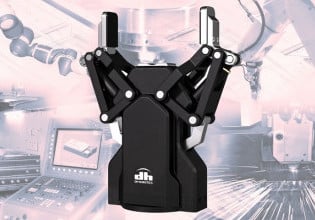Preventing Failures in High-Temperature Manufacturing Processes
Any machine can become a source of elevated temperature, even under regular operation. We cannot assume that temperature problems occur only based on climate conditions, and mitigation steps must be employed.
In a previous article, we discussed different issues automated systems experience when operating under high temperatures. This article will discuss various industry diagnostics and damage mitigation methods at different levels.
High Temperature Manufacturing Challenges
The first thing to consider is that high operating temperatures can be an issue regardless of geographic location. Indeed, automated systems installed in hot climate areas are bound to be subjected to high-temperature damage if no preventive measures are taken. However, these systems tend to be among the best protected because these measures are considered in the designs.
These systems are typically equipped with rugged versions of controllers and field devices specially built to withstand extreme heat. Consequently, building systems in these places are, on average, more expensive than anywhere else.

Figure 1. An automated cement plant in Saudi Arabia. Image used courtesy of ABB
But let's focus on the rest of the automated systems, the majority of which are not in hot climate areas and are also not equipped with rugged components. Can high temperatures affect these systems? The answer is yes.
As mentioned in the previous article, heat damage is usually slow and gradual, which is its most concerning characteristic. Therefore, you might think your system performs optimally under ideal temperature conditions, but heat damage could happen without notice.
Thermal Audits
A thermal audit is the first step toward identifying these risks and problem areas. One way to do a thermal audit is for a whole facility or building. Specialized thermal imaging tools are used for detecting sources of energy inefficiencies, such as air leakages and heat concentration spaces. However, to put together a meaningful report, it is also essential to know basic information about the building including its age, materials used, environmental certifications, and other weather factors.
The building design is a critical stage in which fundamental decisions around temperature efficiencies and energy savings can be made. Architects and civil engineers know numerous techniques to improve efficiency, including airflow management, temperature control design, and cooling systems considerations.
Even existing buildings can be retrofitted with solutions and improvement ideas resulting from a thermal audit. One of the most common temperature issues is unseen air leakages in the infrastructure. These are usually not difficult to fix.

Figure 2. Thermal scanner being used to audit a manufacturing facility. Image used courtesy of Horizon Solutions
Thermal audits can also be performed on specific equipment or systems, and the same thermal sensors can be used. In this case, the goal is to find spaces where the temperature is abnormally high with respect to the surroundings. These spaces indicate that a specific device is likely not functioning correctly.
Any machine can become a source of elevated temperature even under regular operation. This is why we cannot assume that temperature problems occur only based on climate conditions. There are industrial processes where the machinery is expected to generate or dissipate high heat levels. Industrial ovens and beverage pasteurizers are two examples. Ceramic manufacturing processes (including glass) often contain huge furnaces that elevate the temperature of the entire structure and everything inside.

Figure 3. A pasteurizer for large-scale beer production. Image used courtesy of Smart Machine
Preventive Measures
Ventilation for Proper Airflow
It is necessary to take precautions and protect devices in the vicinity of these machines against high temperatures. The level of protection needed depends on the heat levels generated. Sometimes, simple ventilation is sufficient; other times, it becomes necessary to enclose sensitive components and use air conditioning.
Motors and motor drives are other sources of high temperature. By themselves, and under normal circumstances, multiple motors near each other will generate a significant temperature increase.
Also, a single defective motor can become a concerning source of heat. Numerous reasons a motor can malfunction this way include winding issues, ohmic losses, and friction problems. Therefore, proper preventive maintenance is critical for keeping motors working efficiently.
Manufacturer’s installation instructions for motor drives will always contain clearances to the sides, top, and bottom to ensure proper airflow to prevent overheating. However, even when installed properly, filters and vent openings can restrict cooling capacity when blocked with dirt and debris.
Heat Sinks for Heat Dissipation
Passive heat dissipation is another method of thermal management for industrial controls. Motors and other components will generate heat due to inefficiencies, losses, and normal wear, regardless of maintenance practices.
One common form of heat dissipation is heat sinks. These elements are designed to redirect heat away from the device. Heat sinks can be found in many electronic components, ranging from small printed circuit boards to large motor drives (and motors). They can also be retrofitted to some devices.

Figure 4. A heat sink mounted on a circuit board. Image used courtesy of Arrow.com
Industrial Cabinet Cooling Systems
Cooling is the counterpart to heat dissipation. Anybody who has seen a control panel in an automated system has seen the air conditioning systems employed in the industry. Likewise, A/C units for control cabinets are ubiquitous, and they play a critical role in keeping control systems working efficiently. Therefore, performing preventive maintenance on these elements is highly recommended. In addition, some modern A/C systems are integrated with process controllers, enabling remote monitoring and diagnostics.

Figure 5. Cooling units mounted on top and the sides of control panels. Image used courtesy of Apiste
Preventing heat buildup in an industrial control system is a top priority, even when the environment is not always prone to high temperature extremes. Using proper ventilation and appropriately mounting the heat sinks that are provided with control devices can be an easy first step, and installing A/C systems can further reduce the risk of overheating and failure when those temperature spikes occur.






